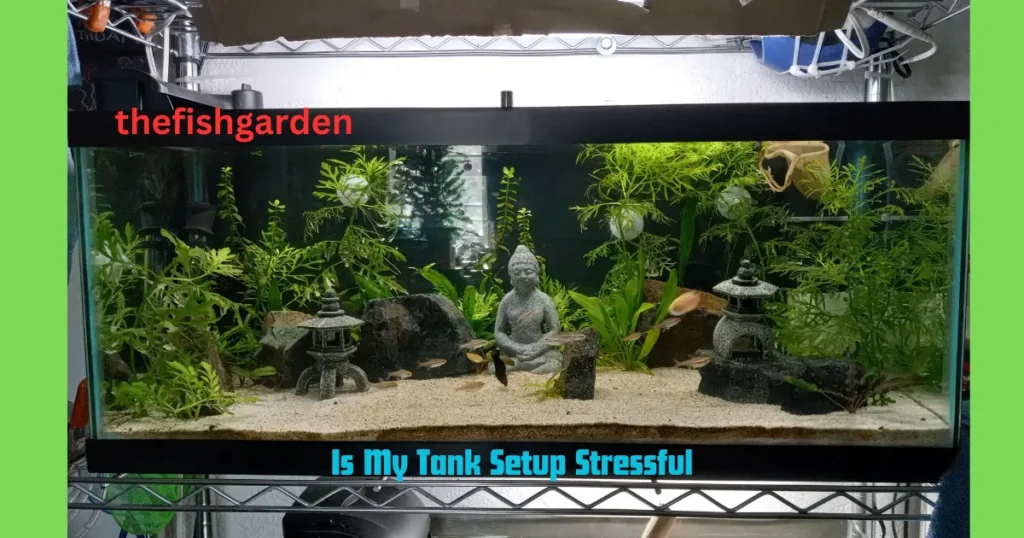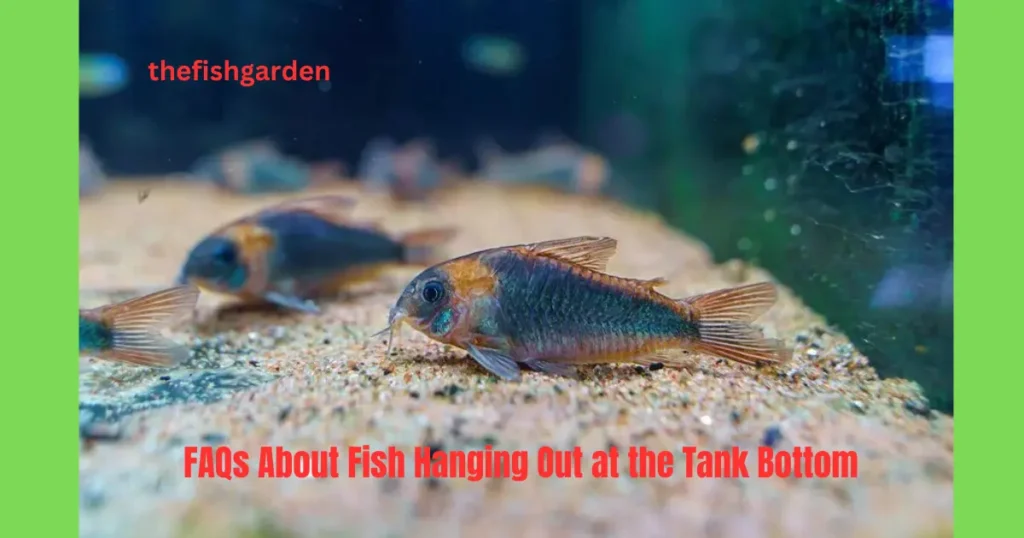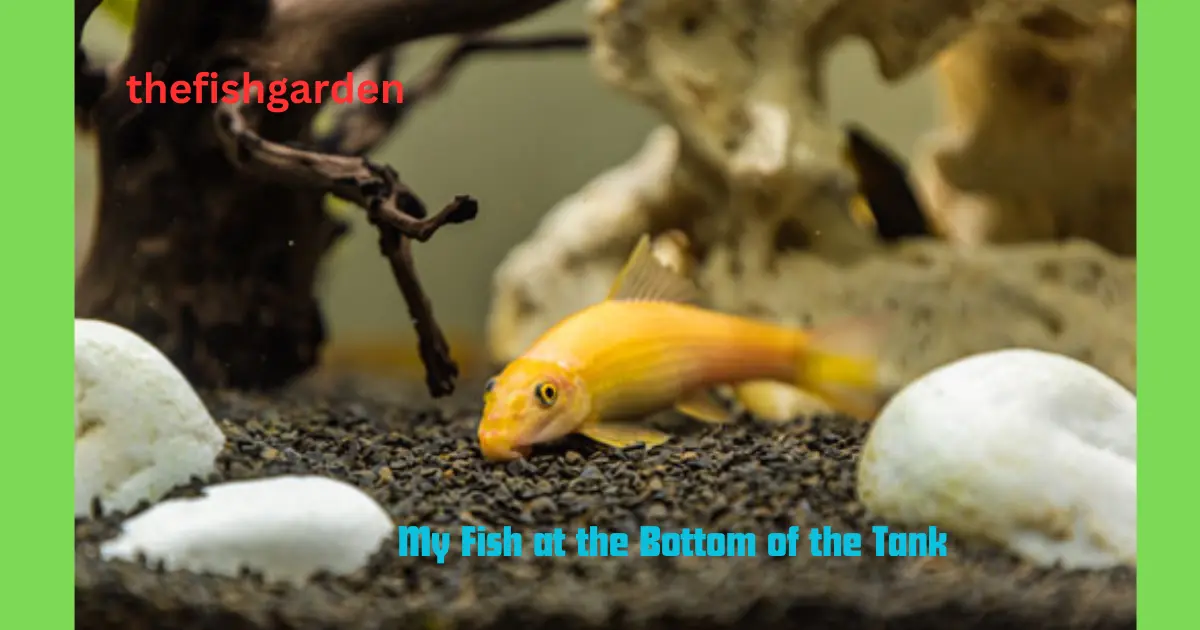Finding your fish resting at the bottom of the aquarium can be alarming for any fish owner. While it’s common for certain bottom-dwelling species to spend time down below, fish that typically swim in the middle or upper levels hunkering down may signal a problem. Determining the cause is key to helping your fish return to normal behavior and health.
This comprehensive article explores the various reasons why fish hang out at the tank bottom, when it’s normal or not, and how to fix it. Read on for tips, advice and steps you can take to get your fish swimming happily again.
Common Reasons Fish Stay at the Bottom
There are a few key reasons fish tend to spend more time downstairs vs their usual hangouts:
Illness
Sick fish often sink to the bottom where they can rest and conserve energy. Bacterial infections, parasites, fungal infections and more can zap a fish’s strength, causing lethargy and bottom-sitting.
Stress
Stress from poor water quality, aggression from tankmates or improper habitat can force fish to the bottom. It’s a way for them to escape further stress and feel more secure.
Improper Tank Setup
An unsuitable aquarium environment can promote bottom-dwelling. Elements like small tank size, insufficient hiding spots, lack of oxygenation or improper water parameters stress fish out.
Old Age
Elderly fish tend to have weakened swimming muscles. As they become more sedentary, they drift to the bottom for support and rest.
Temperament
Some fish naturally prefer the tank bottom, like plecostomus, cory catfish and loaches. They feel at home foraging and resting there.
Is My Fish Sick? Signs to Look For
How can you discern normal bottom-dwelling behavior from a problematic issue in need of attention? Look for these cues:
- Loss of appetite
- Clamped fins
- Lethargy, lack of response
- Labored breathing
- White stringy feces
If your fish shows two or more of these symptoms along with bottom-sitting, illness could be the culprit. Time to investigate further.
Common Fish Illnesses That Cause Bottom-Sitting
Myriad health conditions cause lethargic bottom-sitting in afflicted fish. Let’s examine some top contenders:
Swim Bladder Disorder
The swim bladder controls buoyancy via gas exchange. When problems arise, fish can’t stay buoyant and sink. Causes include bacterial infections, parasites, constipation and more.
Dropsy
A bacterial infection causing fluid retention and bloating. The raised scales resemble a pinecone. Fish drop to the bottom seeking relief.
Anchor Worm
These parasitic crustaceans burrow into a fish’s skin, sapping strength. Fish drop down to rest and rub the parasites off.
Fish TB
Fish tuberculosis is a chronic bacterial disease that causes wasting away. Infected fish become emaciated, lethargic and bottom-dwelling.
Chilling
Sudden cold water shocks fish systems. Metabolism and circulation slow, causing stunned fish to hit bottom.
Is My Tank Setup Stressful?

Improper aquarium conditions can definitely cause fish stress, thereby promoting bottom-sitting. Perform these tank checks:
- Water parameters – Test for ammonia, nitrites, nitrates and pH. Make sure all levels are ideal for your fish species. Adjust as needed.
- Temperature – Verify your heater keeps water within your fish’s preferred temperature range. Make adjustments if not.
- Tank size – Make sure the tank is large enough for all inhabitants. Overcrowding stresses fish.
- Oxygenation – Ensure water surface agitation via filter outflow or air stone for ample oxygen. Add air stone if needed.
- Hiding spots – Provide ample plants, rocks and decor for fish to feel secure. Open space stresses fish.
Steps to Get Your Fish Swimming Normally Again
If you determine your fish’s bottom-sitting stems from illness or stress, prompt action is key. Follow these best practice steps:
1. Quarantine Sick Fish
Move sick fish into a separate, disinfected tank to prevent disease spread and allow focused treatment. Maintain excellent water quality and reduce stressors.
2. Diagnose the Issue
Work to determine the specific illness through research and ideally lab testing. Knowing the culprit is essential to choose proper medication.
3. Medicate Appropriately
Treat diagnosed diseases with suitable anti-bacterials, anti-parasitics or anti-fungals. Follow all label instructions carefully regarding dosing and duration.
4. Improve Tank Setup
Make any needed adjustments like increasing space, adding hiding areas, installing an air stone or changing water parameters.
5. Add Aquarium Salt
Dissolve 1 tablespoon per 5 gallons to help sick fish retain fluids and electrolytes. Support recovery.
6. Offer Optimal Nutrition
Feed a premium fish food with added vitamins and amino acids. A boosted diet aids healing.
When Is Bottom-Sitting Normal?
For some fish, bottom-dwelling is perfectly natural and healthy behavior, not a red flag. Species known to spend ample time downstairs include:
- Plecostomus
- Loaches
- Catfish
- Bichirs
- Stingrays
- Gobies
These fish feel right at home foraging along the tank floor and resting near the bottom. It’s integral to their lifestyle and comfort.
Bottom-sitting only becomes concerning if the fish abandons its usual habitat and shows signs of lethargy or sickness. Monitor closely for any red flags requiring action.
Can Old Age Cause Bottom-Sitting?
As fish reach their senior years, it’s common for them to slow down and spend more time at the tank bottom. Why?
- Weaker swimming muscles as fish age
- More sedentary overall
- The bottom offers stable support
- Conserves energy
- Finding food takes more effort
Try making things easier for elderly fish:
- Feed foods that drop to the bottom
- Place dishes on the floor
- Reduce tankmates to avoid competition
- Provide ample resting areas near bottom
Preventing Unhealthy Bottom-Sitting
While it’s impossible to prevent all sickness leading to lethargic bottom-sitting, you can take key steps to minimize occurrences:
- Maintain excellent water quality
- Feed a high quality varied diet
- Use a strong filtration system
- Perform regular partial water changes
- Limit tankmates to avoid aggression
- Introduce new fish slowly
- Quarantine new additions
- Disinfect gear between uses
FAQs About Fish Hanging Out at the Tank Bottom

New fish keepers often have many questions about bottom-sitting. Here are helpful answers to some most frequently asked questions:
Is it normal for fish to rest at the bottom sometimes?
Yes, it’s completely normal for fish to head to the bottom occasionally to sleep or rest. Time spent down below during daylight hours should be limited, however.
How long can fish stay at the bottom safely?
Healthy fish that typically swim mid-tank or top can rest on tank bottoms for up to a few hours without concern. Longer durations can signify issues.
What does it mean if my fish is gasping at the bottom?
Gasping involves rapid gill movement as fish struggle to breathe. This signals dangerously low oxygen levels. Improve surface agitation immediately.
Why is my fish laying sideways at the bottom?
Laying tilted or completely on their side is typically a very dire sign that fish are extremely weak and close to dying. Urgent action required.
Do fish go to the bottom when molting?
Yes, it’s common for fish about to molt or shed their skin to move to the bottom for safety. It’s a vulnerable process. Ensure calm waters during.
Conclusion
Finding your fish frequenting the tank bottom more than usual certainly merits close monitoring and investigation into potential causes. Have a watchful eye for any accompanying odd behaviors or symptoms of sickness requiring action. Be sure to research your fish species’ natural habits, as bottom-dwelling is completely normal for some.
With attentive care and prompt treatment when problems arise, you can get your fish swimming happily at their preferred tank level once again. Maintaining high water quality and a stress-free environment is also key to preventing unhealthy bottom-sitting behaviors in the first place.
